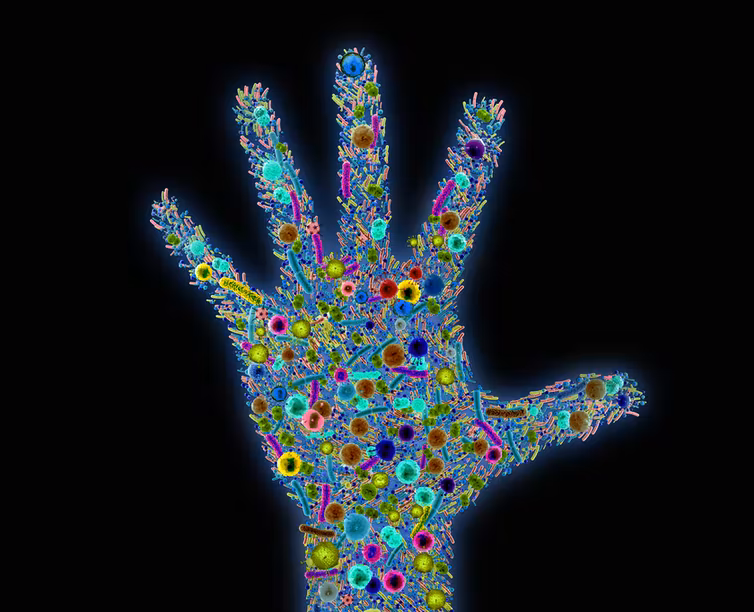Due to its location on the surface of the skin, the cutaneous microbiota is on the front line against external and environmental aggressions: UVs, atmospheric pollutants, etc. Attacks that it manages thanks to the intense metabolic activity of its bacteria, which gives them considerable adaptability. And by protecting themselves, they indirectly protect our epidermis. Demonstration by example:
Most environmental stressors lead to the formation of highly toxic molecules, both for bacteria and for epidermal cells, designated under the generic term of “reactive oxygen species” (ROS). However, certain bacteria of the skin microbiota are able to degrade them thanks to enzymes that they synthesize specifically when they are confronted with them.
UVs are known for their numerous harmful capacities. Already, they can affect certain biological molecules, including DNA and proteins. In order to protect themselves, the bacteria of the skin microbiota produce antioxidant and repair molecules… which also benefit the cells of our epidermis.
UVs also have the effect of transforming a molecule very present in the skin and necessary for its hydration, urocanic acid, into a toxic derivative that can act on the immune system and lead to skin pathologies (urticaria, atopic dermatitis), or even to cancer. Faced with this, a local bacterium, Micrococcus luteushas the ability to reverse this reaction to reform urocanic acid!
Another UV resistance strategy widely used in the living world is the production of pigments capable of blocking radiation. Bacteria are no exception and produce molecules sometimes referred to as microbial sunscreens. To the point that we are now consideringuse the skin microbiota, or some of its elements, in sun protection strategies…
The cutaneous microbiota is therefore an essential partner in preserving the balance of our skin. However, all skin germs without exception can also have negative effects. The positive effects of this microbial flora which has colonized our epidermis result from a permanent dialogue between the species that compose it and our own cells. So, rather than seeking to “improve” an association that has proven its worth, the main objective should be to preserve its dynamic balance.
–

